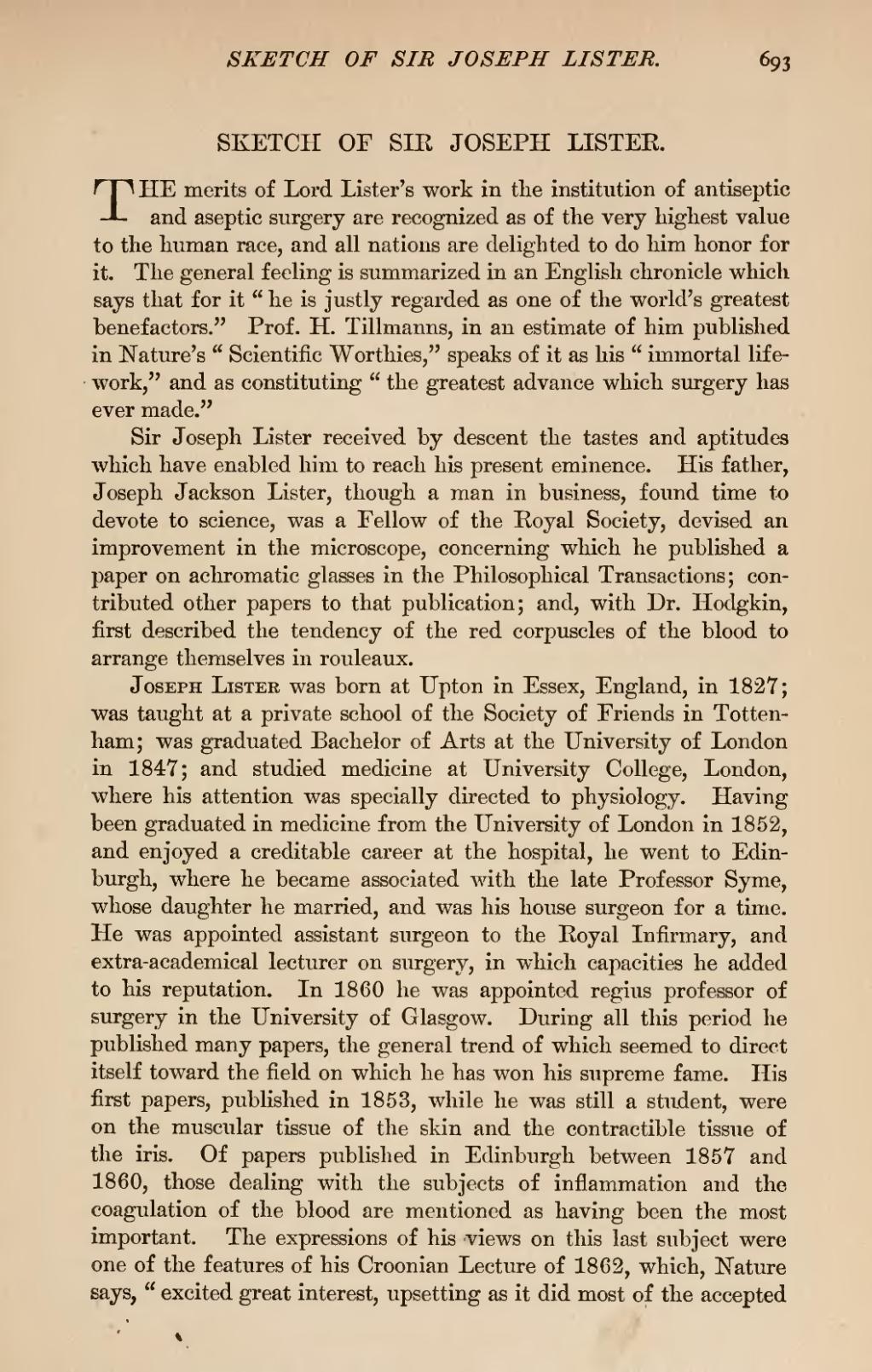| SKETCH OF SIR JOSEPH LISTER. |
THE merits of Lord Lister's work in the institution of antiseptic and aseptic surgery are recognized as of the very highest value to the human race, and all nations are delighted to do him honor for it. The general feeling is summarized in an English chronicle which says that for it "he is justly regarded as one of the world's greatest benefactors." Prof. H. Tillmanns, in an estimate of him published in Nature's "Scientific Worthies," speaks of it as his "immortal lifework," and as constituting "the greatest advance which surgery has ever made."
Sir Joseph Lister received by descent the tastes and aptitudes which have enabled him to reach his present eminence. His father, Joseph Jackson Lister, though a man in business, found time to devote to science, was a Fellow of the Royal Society, devised an improvement in the microscope, concerning which he published a paper on achromatic glasses in the Philosophical Transactions; contributed other papers to that publication; and, with Dr. Hodgkin, first described the tendency of the red corpuscles of the blood to arrange themselves in rouleaux.
Joseph Lister was born at Upton in Essex, England, in 1827; was taught at a private school of the Society of Friends in Tottenham; was graduated Bachelor of Arts at the University of London in 1847; and studied medicine at University College, London, where his attention was specially directed to physiology. Having been graduated in medicine from the University of London in 1852, and enjoyed a creditable career at the hospital, he went to Edinburgh, where he became associated with the late Professor Syme, whose daughter he married, and was his house surgeon for a time. He was appointed assistant surgeon to the Royal Infirmary, and extra-academical lecturer on surgery, in which capacities he added to his reputation. In 1860 he was appointed regius professor of surgery in the University of Glasgow. During all this period lie published many papers, the general trend of which seemed to direct itself toward the field on which he has won his supreme fame. His first papers, published in 1853, while he was still a student, were on the muscular tissue of the skin and the contractible tissue of the iris. Of papers published in Edinburgh between 1857 and 1860, those dealing with the subjects of inflammation and the coagulation of the blood are mentioned as having been the most important. The expressions of his views on this last subject were one of the features of his Croonian Lecture of 1862, which, Nature says, "excited great interest, upsetting as it did most of the accepted
